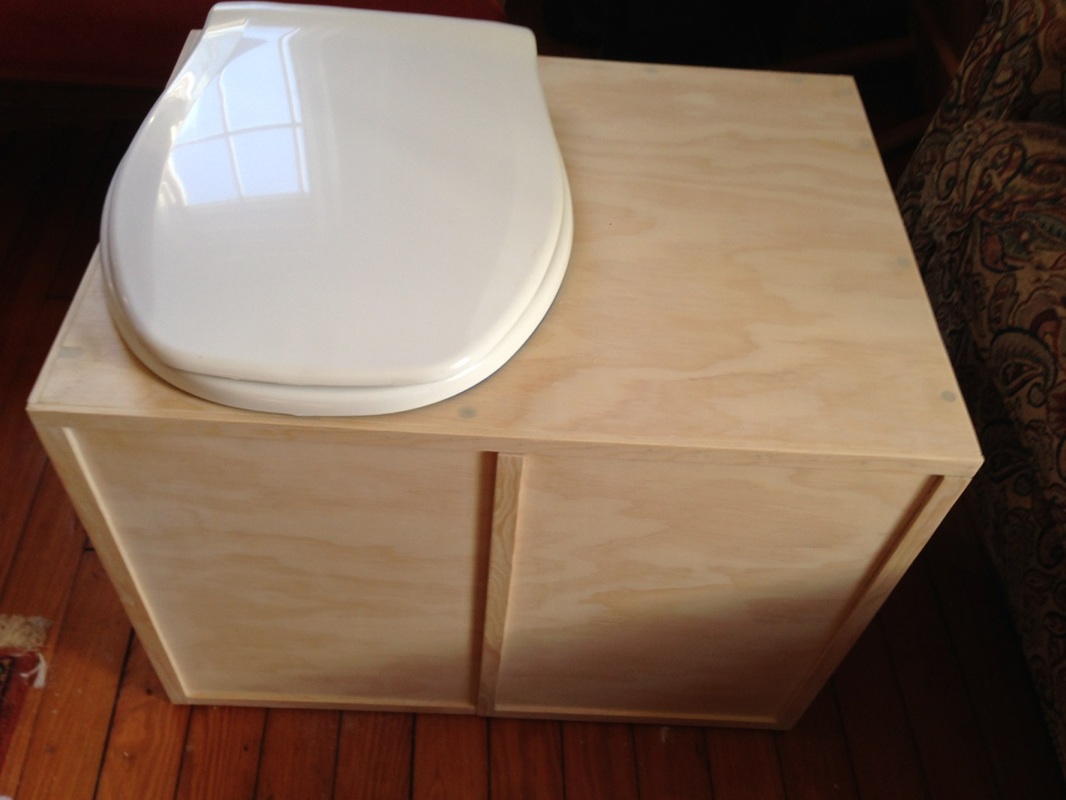
I've come to expect a look of distress every time I tell someone that we'll be using a bucket as our toilet. Then come the questions, including the most-asked question: "Won't it smell?"
I'll let you know the answer definitively after we get our rustic "plumbing" in place. For now, I can say that many, many people use some form of composting toilet and swear they wouldn't go back to flushing toilets. Jason and Nikki Wynn, for example. They've produced a number of great videos and FAQs on the subject. And then there's the Bible of all things composting toilet: The Humanure Handbook.
In addition to being an off-the-grid solution, composting toilets have a sustainability appeal; they eliminate the need for a massive volume of water. Every year, the average person in the average house uses thousands of gallons of fresh drinking water to flush their poop down the toilet: 4757 gallons with an older toilet, 1850 gallons with a low-flush toilet*. In a world of water shortages, that doesn't seem right.
Back to our toilet. We've built a box to hold two buckets (more on that in a minute) and our Ecovita Privy kit. Besides a fan (which we'll install later), the key to a scentless composting toilet is keeping urine and feces separate. The poop will go into the bucket, covered each time with a scoop of Coco Coir stored in the second bucket. Alternatively, we could use sawdust, peat moss or even grass clippings. Our research pointed us to coco coir. (Find one discussion of the alternatives at permies.com.)
The urine will get diverted and run through a pipe to a plastic gas can beneath the house. Since urine is non-toxic, it can be diluted with water and emptied on site without any issues. (Remember, we have a forest all around us.) It's even a safe, proven fertilizer, but we're not ready to try that! The poop, on the other hand, can legally and hygenically be bagged and deposited at the dump with our other trash until we get an official composting system set up. Conservative sanitation experts recommend a full year of composting before "humanure" can be spread.
Once I prime and paint the toilet box, it will be ready for install. That's after we have walls and a floor, of course! Back to work...
(*Source: "We Have Better Things to Do with Clean Water," Carl Hensemen, sanitation expert with the Bill & Melinda Gates Foundation.)
I'll let you know the answer definitively after we get our rustic "plumbing" in place. For now, I can say that many, many people use some form of composting toilet and swear they wouldn't go back to flushing toilets. Jason and Nikki Wynn, for example. They've produced a number of great videos and FAQs on the subject. And then there's the Bible of all things composting toilet: The Humanure Handbook.
In addition to being an off-the-grid solution, composting toilets have a sustainability appeal; they eliminate the need for a massive volume of water. Every year, the average person in the average house uses thousands of gallons of fresh drinking water to flush their poop down the toilet: 4757 gallons with an older toilet, 1850 gallons with a low-flush toilet*. In a world of water shortages, that doesn't seem right.
Back to our toilet. We've built a box to hold two buckets (more on that in a minute) and our Ecovita Privy kit. Besides a fan (which we'll install later), the key to a scentless composting toilet is keeping urine and feces separate. The poop will go into the bucket, covered each time with a scoop of Coco Coir stored in the second bucket. Alternatively, we could use sawdust, peat moss or even grass clippings. Our research pointed us to coco coir. (Find one discussion of the alternatives at permies.com.)
The urine will get diverted and run through a pipe to a plastic gas can beneath the house. Since urine is non-toxic, it can be diluted with water and emptied on site without any issues. (Remember, we have a forest all around us.) It's even a safe, proven fertilizer, but we're not ready to try that! The poop, on the other hand, can legally and hygenically be bagged and deposited at the dump with our other trash until we get an official composting system set up. Conservative sanitation experts recommend a full year of composting before "humanure" can be spread.
Once I prime and paint the toilet box, it will be ready for install. That's after we have walls and a floor, of course! Back to work...
(*Source: "We Have Better Things to Do with Clean Water," Carl Hensemen, sanitation expert with the Bill & Melinda Gates Foundation.)
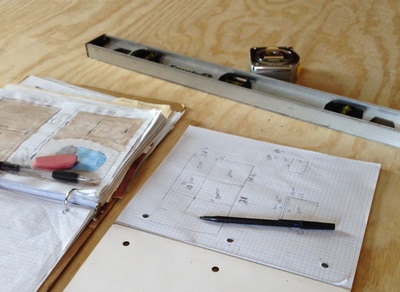
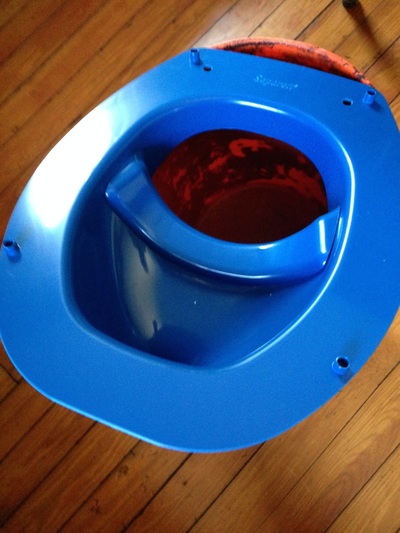
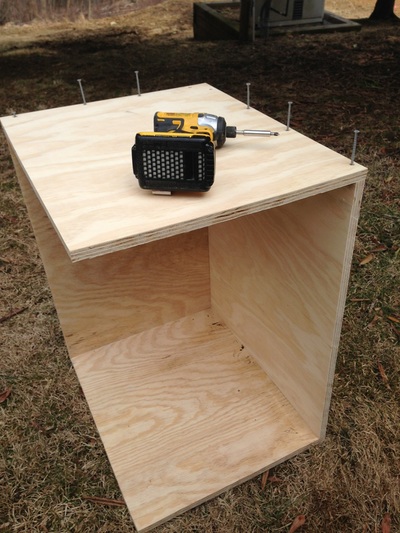
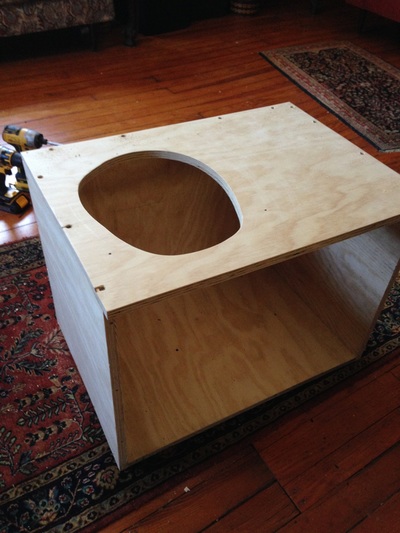
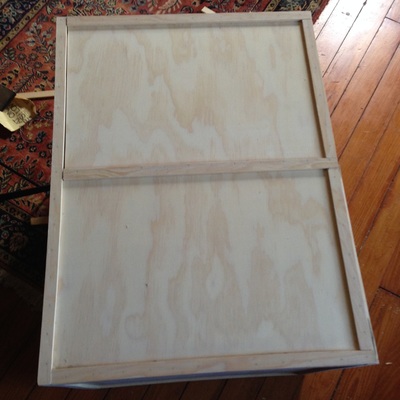
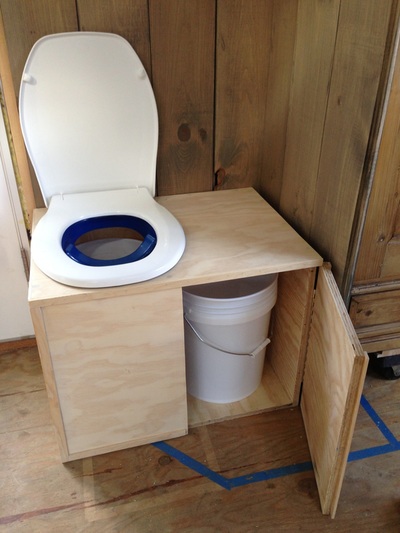
 RSS Feed
RSS Feed
